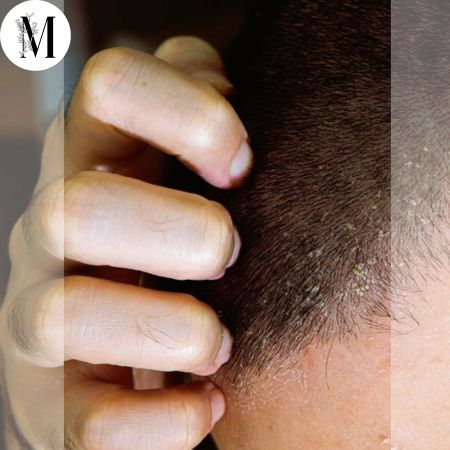Introduction
Skin fungus is a common condition that affects many individuals. It occurs when certain types of fungi grow and multiply on the surface of the skin. Skin fungal infections can cause discomfort, itching, and even embarrassment. Fortunately, there are steps you can take to prevent these infections and keep your skin healthy. In this article, we will explore the reasons for getting skin fungus and provide valuable tips on how to prevent it.
Common Causes of Skin Fungus
- Poor hygiene practices: Neglecting proper hygiene, such as not washing regularly or not drying the skin thoroughly, creates an environment where fungi can thrive.
- Warm and moist environments: Fungi thrive in warm and moist conditions, making areas like sweaty feet, armpits, and groin more susceptible to infections.
- Weakened immune system: A weakened immune system due to factors like stress, certain medications, or underlying health conditions can increase the risk of developing skin fungal infections.
- Sharing personal items: Sharing items like towels, clothing, or footwear with an infected person can transfer the fungi to your skin.
- Contact with infected individuals: Direct skin-to-skin contact with someone who has a skin fungal infection can lead to the spread of fungi.
Types of Skin Fungal Infections
- Athlete’s foot: This common fungal infection affects the feet, particularly between the toes, causing itching, redness, and peeling skin.
- Ringworm, despite its name, is caused by a fungus, not worms. It can affect various parts of the body, causing red, itchy, and ring-shaped rashes.
- Jock itch: Primarily affecting the groin area, jock itch causes a red, itchy rash that can be uncomfortable and persistent.
- Nail fungus: Fungal infections can also affect the nails, leading to thickened, discolored, and brittle nails. This condition can be challenging to treat and may require medical intervention.
- Yeast infections: Yeast is a type of fungus that can cause infections in various areas of the body, including the skin. Yeast infections often occur in warm, moist areas such as the armpits or under the breasts.
Symptoms of Skin Fungal Infections
Recognizing the symptoms of skin fungal infections is crucial for early detection and prompt treatment. Common symptoms include:
- Itching and redness: Fungal infections can cause persistent itching and redness in the affected areas.
- Scaling or peeling skin: The skin may appear flaky, scaly, or peel off in patches.
- Rash or blisters: Some infections can result in a rash or the formation of blisters.
- Discoloration or thickening of nails: Nail fungus may cause nails to become discolored, thickened, or crumbly.
Prevention Tips for Skin Fungus
Preventing skin fungal infections is possible by adopting simple yet effective measures:
- Practice good hygiene: Regularly wash and dry your skin, paying attention to areas prone to sweating, such as the feet, groin, and armpits. Use a mild soap and pat your skin dry thoroughly.
- Keep your skin dry: Moisture provides an ideal environment for fungi to thrive. After showering or swimming, ensure that your skin is completely dry before putting on clothes.
- Avoid sharing personal items: Refrain from sharing towels, clothing, footwear, or personal care items with others, especially if they have a known fungal infection.
- Wear breathable fabrics: Opt for breathable fabrics like cotton that allow air circulation and minimize sweat buildup on your skin.
- Use antifungal products: Incorporate antifungal powders, sprays, or creams into your skincare routine, especially if you are prone to fungal infections or spend time in environments where fungi thrive.
- Boost your immune system: A healthy immune system can help ward off infections, including skin fungal infections.
- Maintain a healthy diet, exercise frequently, get adequate sleep, and manage stress to boost your immune system.
Home Remedies for Skin Fungal Infections
While medical treatment is often necessary, some home remedies may help alleviate symptoms and aid in the healing process:
- Tea tree oil: Tea tree oil has natural antifungal properties. Apply a few drops in a carrier oil to the afflicted region.
- Apple cider vinegar: Dilute apple cider vinegar with water and apply it to the affected skin using a cotton ball. It can help restore the skin’s pH balance and inhibit fungal growth.
- Garlic: Garlic contains compounds with antifungal properties. Crush a couple garlic cloves and mix them with olive oil. Apply the mixture to the afflicted region.
- Aloe vera: Aloe vera gel has soothing properties and may help relieve itching and inflammation associated with fungal infections.
- Yogurt: Consuming probiotic-rich yogurt or applying it topically may help restore the balance of good bacteria on the skin and inhibit fungal growth.
Medical Treatments for Skin Fungal Infections
In more severe cases, medical treatments may be necessary. These can include:
- Over-the-counter antifungal creams: Topical antifungal creams, such as clotrimazole or terbinafine, can help treat mild to moderate skin fungal infections.
- Prescription medications: If over-the-counter creams are ineffective, your doctor may prescribe stronger antifungal medications in the form of creams, lotions, or oral medications.
- Oral antifungal drugs: In cases of severe or recurrent fungal infections, oral antifungal medications may be prescribed.These drugs eradicate fungus from within the body.
- Laser therapy: Laser treatment is a newer approach to treating fungal infections. It uses focused light energy to destroy the fungus without damaging the surrounding skin.
- Surgical removal of infected nails: For persistent nail fungus that doesn’t respond to other treatments, surgical removal of the infected nail may be necessary to allow for healthy nail regrowth.
Tips for Preventing Recurrence
Preventing the recurrence of skin fungal infections is essential to maintain long-term skin health. Here are some tips to follow:
- Maintain good hygiene practices: Continue practicing good hygiene habits, including regular bathing, thorough drying of the skin, and changing clothes regularly, especially socks and underwear.
- Treat other affected areas: If you have a skin fungal infection in one area, such as athlete’s foot, be sure to treat any other affected areas as well to prevent the infection from spreading.
- Wash clothes and bedding regularly: Launder clothes, towels, and bedding frequently to eliminate any fungal spores that may be present.
- Avoid walking barefoot in public areas: Wear sandals or flip-flops in public places like swimming pools, locker rooms, and communal showers to minimize the risk of fungal exposure.
- Keep your environment clean and dry: Regularly clean and dry areas that are prone to moisture, such as bathrooms, gyms, and swimming areas. Use antifungal sprays or powders on surfaces if necessary.
Conclusion
Skin fungal infections can be uncomfortable and bothersome, but they are preventable. By practicing good hygiene, keeping your skin dry, and taking precautions to avoid contact with infected individuals or items, you can significantly reduce your risk of developing skin fungal infections. Additionally, incorporating natural remedies and seeking medical treatment when necessary can help effectively treat these infections and prevent their recurrence. Remember to prioritize your skin health and take proactive measures to keep your skin fungus-free.


